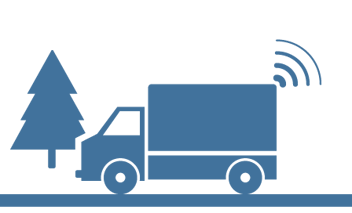Insights
How to Optimize Your Value Chain Process
What is the value chain?
The term value chain is the process of creating a product or service. It includes the procurement of raw materials, production, manufacturing, and other procedures to develop and sell a finished product to the consumer.
A supply chain represents the steps it takes to get the product or services to the customer. The primary concerns of supply chain management are the cost of materials and effective product delivery.
What are the steps in the value chain process?
There are five steps in the value chain process. They provide an organization with the ability to create value above its customers’ cost for goods or services. Maximizing its activities in any one of the five steps allows a company to create an advantage over its industry competitors.
- Inbound Logistics: Receiving, warehousing, and inventory control.
- Operations: Value-creating activities that can transform inputs into products such as assembly and manufacturing.
- Outbound Logistics: Activities required to get the finished product to a customer. These include warehousing, order fulfillment, inventory management, and shipping.
- Marketing and Sales: Activities associated with convincing a consumer to purchase a product.
- Service: All activities that help maintain and enhance the value of a product. These include customer support and warranty service.
A series of support activities are required to streamline these value chain steps—technology, procurement, development, human resource management, and infrastructure.
What is value chain optimization?
Oil and gas, agricultural, and engineering operations have become more global and driven by competitive pressures, market volatility, and demand fluctuations. Companies are continually looking for ways to remain competitive and increase their profitability, whether by improving operational efficiency or remove individual costs. Value chain optimization helps redefine a company's processes, improve collaboration, reduce value leaks, and increase innovation to ultimately make better and more robust decisions across your operation’s lifecycle.
What are the steps in value chain optimization?
Though there isn't a standard format for evaluating and optimizing an organization's value chain, when assessing a company to deliver improvements in the flow of products, information, and money, there are four steps most will take.
1. Scope Definition
The scope defines the extent and limits of the optimized processes based on a value chain assessment and collaborative input between everyone involved in the optimization. Examples of the process depend on the industry being optimized and include demand and operational planning, plant distribution, and client satisfaction.
2. Process Documentation
As documented within the defined scope, each work process identifies inputs, outputs, and metrics. The next step would be to highlight performance against best practices and areas of potential loss targets.
3. Financial and Operational Alignment to Priority Projects
Internal work is completed based on process documentation results, and external work across trading partners aligns stakeholders to achieve the desired results.
4. Implementation
Revamped projects and plans are reinstalled to deliver the desired results. At the end of the process, project milestones, monthly milestones, and performance reviews help it remain on track with project expectations.
How can value chain optimization increase the ROI for my company?
Using supply chain management tools, you can efficiently generate schedules for your business's upcoming projects and plans. Value chain optimization generates a tremendous opportunity to overcome past deficiencies highlighting critical operations and supply chain decision-making tools.
Value chain optimization increases production performance and provides insights to improve understanding deviations between operations and planning. Technological development software will give a break from the traditional time-consuming means of data collection.
From initial planning to scheduling and inventory, optimization will help promote greater visibility across the entire value chain. Traditionally, most companies do not learn the extent of their inventory deficiencies until they complete extensive surveys.
Value chain optimization helps build model scenarios only once instead of having to rebuild for each probable scenario. This saves tremendous time because only one scenario is required to be built and run instead of running real-life scenarios on the same model.
Value chain optimization can consider resource-to-market strategies that take the entire system into account. That means from raw materials to market, these strategies take all elements and put them into context to improve inventory and quality.
Value chain optimization for your business
American academic Michael Porter introduced the idea of the value chain in a book he wrote in 1985. His idea was to show how companies could add value to their raw materials by producing products that are eventually sold to the public. Since his idea was born, it has evolved, but the basic concept remains the same: value chain managers look for opportunities to add value to the business.
Based on our extensive experience, we look for ways to cut back on shortages, prepare product plans, and work with others to add value to the customer. When you join forces with us, your company’s value chain optimization plans become our focus. If you’re ready to optimize your value chain, contact our team today. We look forward to working with you.



